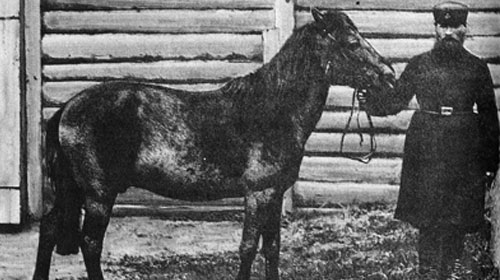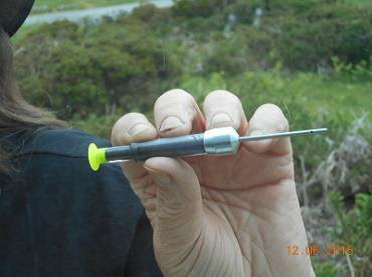Overview of ABA Brumby Info Papers
ABA Brumby Resource Information Paper 1.1
Introduction
There is a wealth of information to show the many contributions that Wild Horses have, and continue to have, on our spiritual wellness, developing early European post-settlement, our social history, tourism, poetry, songs, and in addition to many other examples of their central connection to us, the Brumby’s iconic status is represented on Australia’s $10 currency note.
Wild Horses are known by a range of ‘titles’ in different countries. The North Americans call wild horses Mustangs, England identifies them as ponies by location (i.e. Dartmoor Ponies) and in Australia they are known as Brumbies’. The Australian Brumby Alliance (ABA) uses the title ‘Brumby’, however either Brumby or Wild Horse can be used to describe horses that survive by nature’s stringent code “survival of the fittest”.
Natural selection has enabled the Brumby to evolve into an Equid species with robust genes, low parasite burdens, strong, slightly shorter neck and backs, sound bone structure, keen eye-sight and hearing and the benefits of living in a strong social family bonds, to name but a few.
Australia’s Brumby (scientifically known as Equus caballus) is a “wild horse that survives in an unrestrained, untamed state in a natural herd structure whereby natural selection decrees the type that survives in that environment”. [Source: ABA definition]
Concerns have been raised about Brumbies living in bushland areas that are now designated national parkland. This series of ABA information papers sets out to explain the history and values that Brumbies provide when living wild in sustainable, viable numbers, which can increase the robustness and richness of their parkland environment.
Overseas studies show that managed wild horse populations will increase biodiversity, and a new concept of “Conservation grazing” is now used which utilises the positive impacts that large herbivores contribute to increase biodiversity. Australia once had Megafauna weighing up to 2,000 kilograms grazing across its continent. These large herbivores were in decline when Aboriginals migrated to Australia, and disappeared soon after their arrival.
Manage ALL Overabundant Species
Overabundance of any species will negatively impact on an ecosystem’s viability. If negative impacts seem to increase to unsustainable levels, it is essential to identify and quantify the effects of and relationships between all species that are causing the negative impacts, such as those resulting from pigs, deer, goats, rabbits, horses, foxes, dogs, cats and humans. The complexity of each environmental habitat cannot be understated and to simply react without a holistic approach will never solve the problem and may well exacerbate the problem.
Progression of ABA Information Packages
The ABA will develop a range of information sheets that flow on from this introductory over-view in order to highlight the many ways that wild horses have enriched our lives and the environment. This initiative has particularly emerged to address the many school project enquiries the ABA receives. However this will be a work in progress for a while.
Jill Pickering, Australian Brumby Alliance Inc., 10-October-2015

Dawn Horse Eohippus 
Tarpan 
Dartmoor Ponies 
Fertility Control 
Fertility Control 
Environment 
Rehoming
Have a topic suggestion?
Please email further topic suggestions via our Contact ABA form on our Contact page
ABA Brumby Info Papers
1.1 Introduction to ABA Information Papers
1.2 How the ABA Supports Heritage Brumbies
1.3 Wild Horse Ancestors
2 About Australian Heritage Brumbies
2.1 The Origin of Australia’s Wild Horses
2.2 Brumby Heritage Values (in development)
2.3 The Sentient Brumby and Family Bonds
2.4 Brumby Genetic Strengths (in development)
2.5 The Brumby’s Mystical Spirit in Humans (in development)
3 Brumby Management – Complexities
3.1 The Brumby, the Environment and the Management Debate
3.2 The Brumby – Remove or Control Debate (in development)
3.3 Indigenous/non-indigenous, native/non-native Debate (in development)
3.4 The Brumby – Bio-Security Debate (in development)
3.5 Brumby Manure Concerns
3.6 Brumby Bio-Diversity Values
3.7 Brumby Weed Concerns
3.8 Brumby Water Quality and Erosion Concerns
3.9 Australian Megafauna and Brumbies (in development)
3.10 Brumby Economic Benefits (in development)
4 Wild Horse Management – Overseas
4.1 Wild Horse Locations Across the World (in development)
4.2 Conservation Grazing (in development)
4.3 Dartmoor National Park England
4.4 Introduction-Camargue white horses
4.5 Wild Horse Evolution – Domestication & Rewilding
5 Brumby Management – Options “On-the-table”
5.1 Humaneness of Current Brumby Management Options
5.2 Overview of Wild Horse Fertility Control
5.3 Why Aerial Shooting Brumbies is not Humane
6 Transition to domestic working life with humans
6.1 Principles of Rehoming Brumbies
6.2 Brumby Skills in Domestic Life (in development)
6.3 Australian Brumby Horse Register (in development)
7 Wild Horse Poetry and Stories
7.1 Story Reunited & The Midwife Brumby
7.2 Story The Secret Lives of Horses by Wendy Williams
7.3 Story of Little Grey
7.4 Poem-Lyn Sutton Australian Connection
7.5 Poem Wild Horse Survival by Trish Beckwith
7.6 Poem Wild Horse Rain by Kym Eitel
7.7 Poem The Horseman by Terry Wilson
7.8 Poem TRELAWNY by Maureen Clifford
7.9 Poem Australian Heritage Brumbies by Lyn Sutton
7.10 Poem Do You See Me by Lynette Sutton
7.11 Poem The horses 10 commandments








